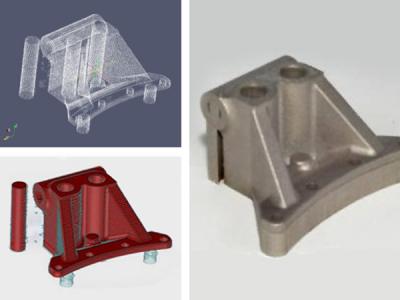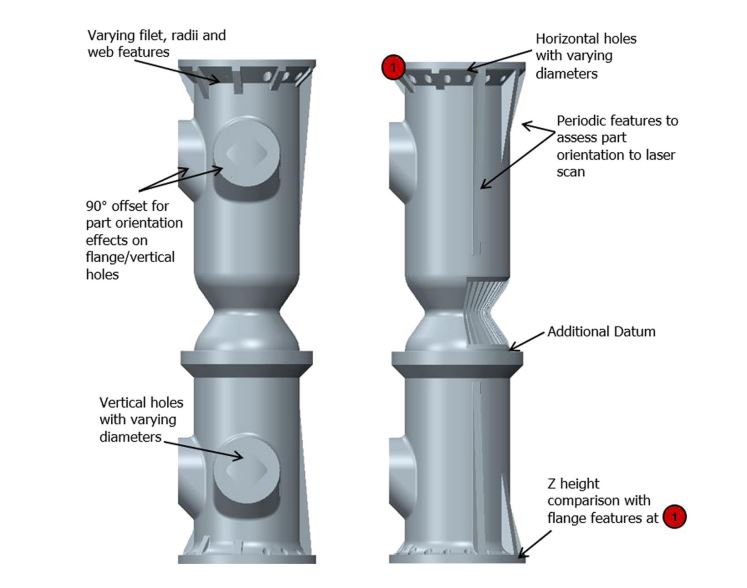New Mexico additive manufacturing software developer Sigma Labs, has obtained third-party validation of its PrintRite3D platform in a study by U.S. defense agency DARPA.
The study discusses the validation process involved in producing complex metal parts of consistent quality. It was sponsored by DARPA’s Open Manufacturing Program and conducted in conjunction with aircraft engine manufacturer Honeywell Aerospace, which has been collaborating with Sigma labs since 2014.
As an agency of the United States Department of Defense (DoD), DARPA is responsible for the development of emerging technologies for use by the military. In line with this goal, it created the the Open Manufacturing program to ‘lower the cost and speed the delivery of high-quality manufactured goods with predictable performance.’
DARPA-validated quality assurance and process monitoring
One of the current challenges of metal additive manufacturing is verifying part quality throughout the production of a part. Using trial-and-error, this is done at a significant cost to the manufacturer. To cut the time and materials wasted Sigma Labs produced, and continue to develop, the PrintRite3D platform.

PrintRite3D is a combination of one hardware module and two software modules for additive manufacturing quality assurance, and in process monitoring. When used together they collect and process data which users can analyse and inspect, in real-time, and implement corrections if necessary.
For high quality end use parts, metal 3D printing processes require in- situ monitoring. After fabrication, these parts are also inspected for defects such as high porosity, incorrect density, residual stress, cracking and warping. As a result manufacturers won’t know if the part meets its design specification until the printing process has ceased.
PrintRite3D hardware includes three individual modules. The Sensorpak, a hardware module which includes a set of off-axis and on-axis in-process sensors, which collects real-time data on each individual layer during 3D printing. The data that Sensorpak collects is then fed into two software modules – INSPECT and CONTOUR.
INSPECT uses the sensor data to establishes in-process metrics for each metal or alloy during the process, providing users with a part quality report.
CONTOUR is a layer-by-layer geometry measurement tool. It provides users with the ability to compare the part in-printing with the original digital CAD model during manufacture.

Advancing wide-scale industrialisation of metal AM
DARPA has been investigating the possibilities of 3D printing since the late 1990s, keen to tackle ‘cost escalation’ and delay during the development, prototyping and testing of defense systems.
This recent study, shows that PrintRite3D, while not specifically aimed at defence, manages to solve, or at least lessen, the cost and increase the rate of first time success when producing high value end use parts. The paper demonstrates how PrintRite3D was able to detect and eliminate potential early-stage problems in the 3D printing process. Using rocket nozzles as a test part, the study the 3D printed components achieve target “porosity, geometric accuracy, and mechanical strength” when PrintRite3D is applied.

Commenting on the results of the study John Rice, CEO of Sigma Labs, he said, “Obtaining this third-party validation of the value of PrintRite3D in metal additive manufacturing is one of the company’s most important milestones.”
Adding, “Our six-year research with Honeywell and the DARPA Open Manufacturing Program specifically demonstrates that the analysis of the Thermal Emission Density (TED) metric made possible by our technology can play a critical role in ensuring quality in industrial additive manufacturing of metal parts.”
Details of the study, titled, “LPBF Right the First Time—the Right Mix Between Modeling and Experiments”, are published online in Integrating Materials and Manufacturing Innovation. It is co-authored by Mustafa Megahed, Hans-Wilfried Mindt, Jöerg Willems, Paul Dionne, Lars Jacquemetton, James Craig, Piyush Ranade and Alonso Peralta.
Sigma Labs will also be exhibiting at the RAPID + TCT additive manufacturing conference in Detroit this month. If you want to meet 3D Printing Industry during the show, get in contact.
For live coverage of RAPID + TCT 2019, subscribe to the 3D Printing Industry newsletter, follow us on Twitter and like us on Facebook. Seeking jobs in engineering? Make your profile on 3D Printing Jobs, or advertise to find experts in your area.



